Intel Core i3-N305 and N100 Appliance Internal Overview
Opening the bottom of the chassis, we see something very different. One item that might stick out is the green DC input terminal is off by a few degrees. We just would not use it.
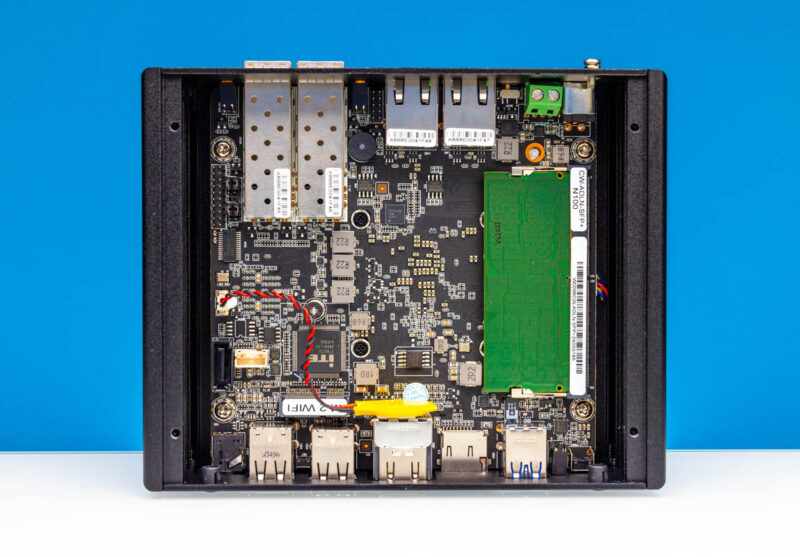
Here we can see that this is a CWWK motherboard with the model CW-ADLN-SFP+ N100. CW is Chang Wang. ADLN is Alder Lake-N. SFP+ is for the onboard 10G solution, and then N100 is the CPU.
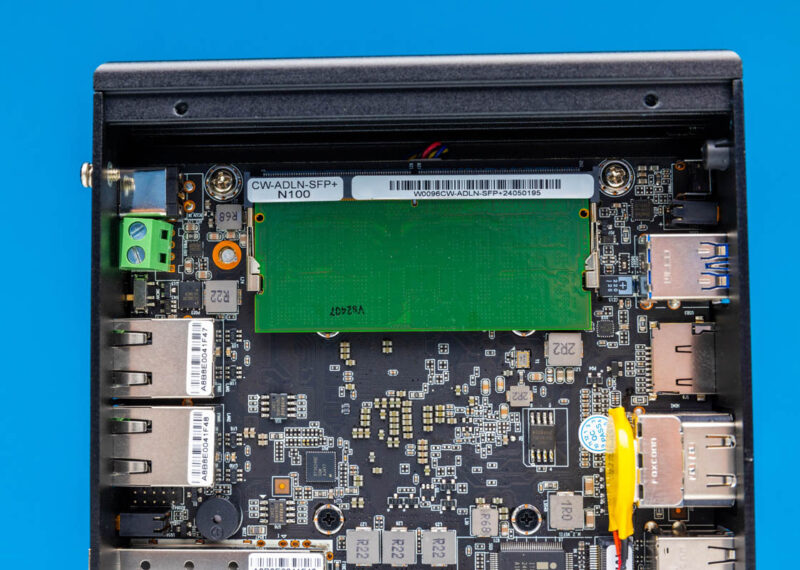
We purchased the N100 unit with a DDR5-4800 16GB SODIMM and it came from SK hynix.
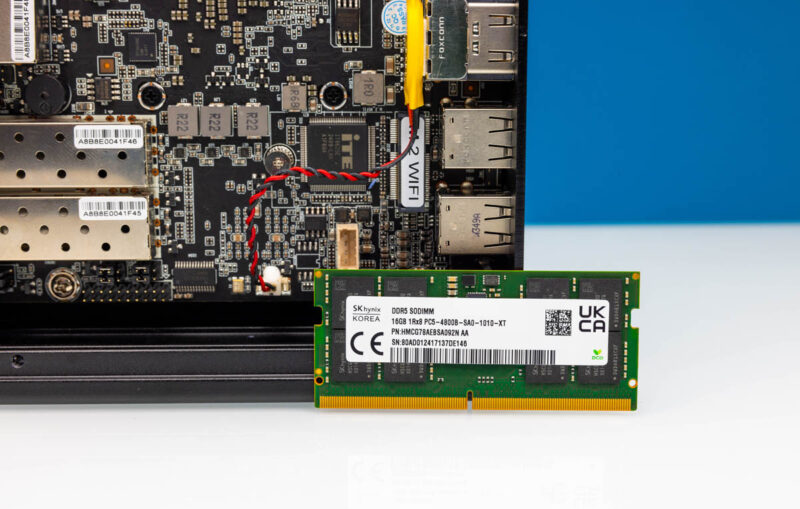
The Core i3-N305 version was motherboard model CW-ADLN-SFP+ I3 N305.
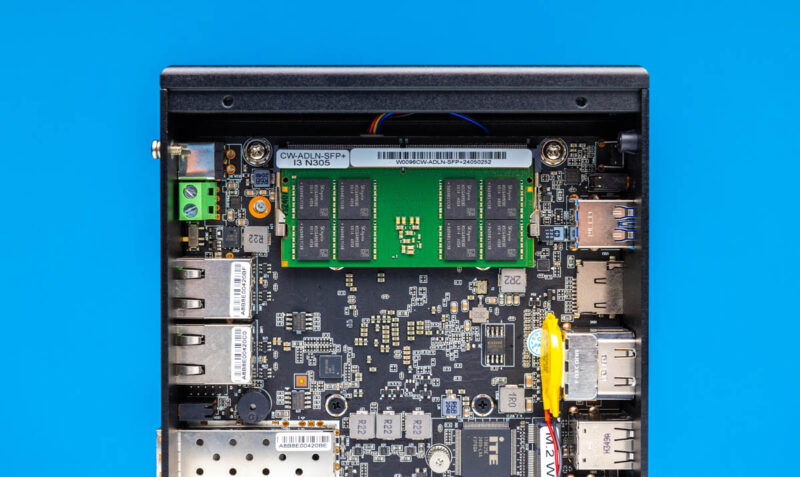
We purchased this with a 32GB SODIMM. Usually, these chips are only supposed to take 16GB, but these systems are tested with 32GB if you select that option. As a result, we ordered the 32GB model since we wanted to see the model it came with.
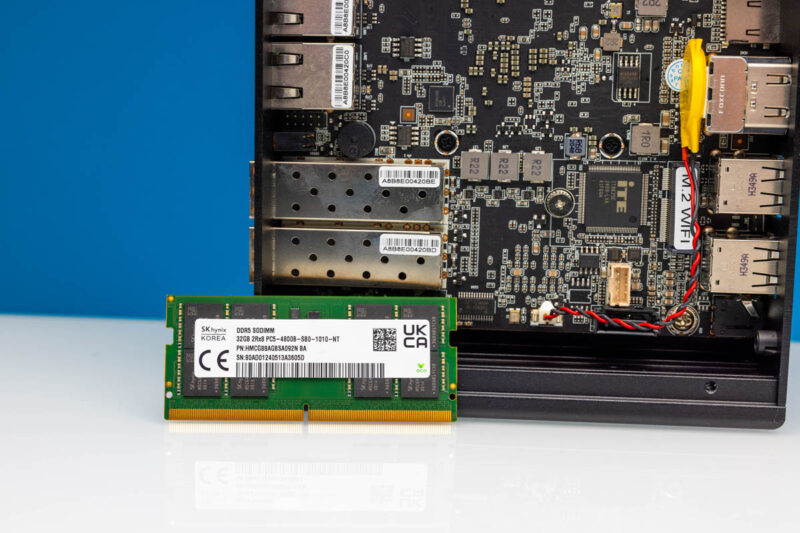
The motherboards are the same except for the CPU, so here is a look without components.
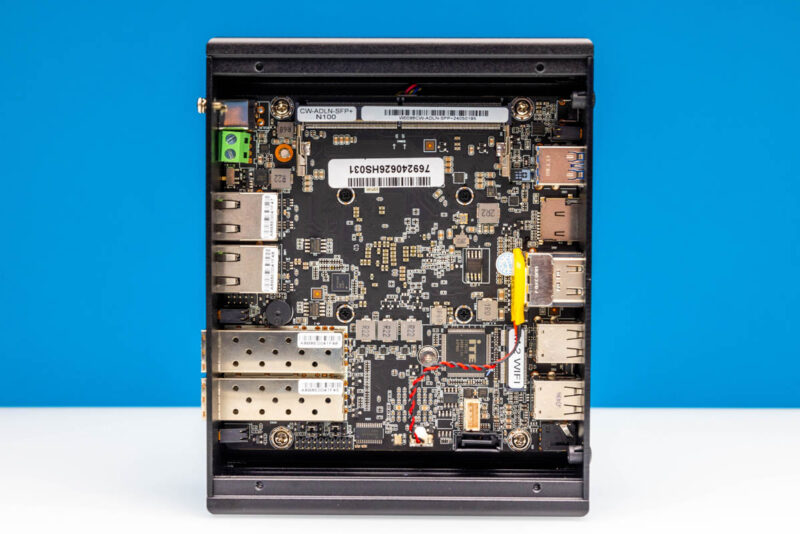
Missing here is a M.2 storage slot. We will get to that soon.
We can see on the bottom that we have a M.2 WiFi slot as well as a SATA data and power connection.
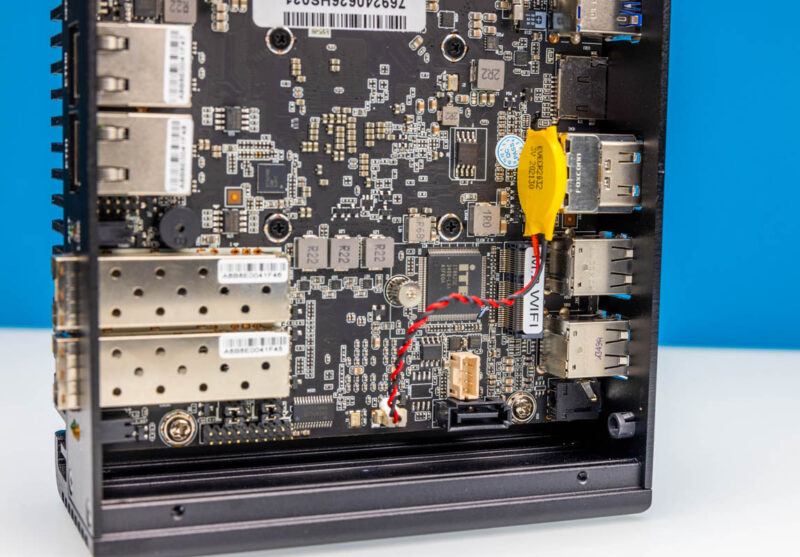
The SATA data and power cable are included here.
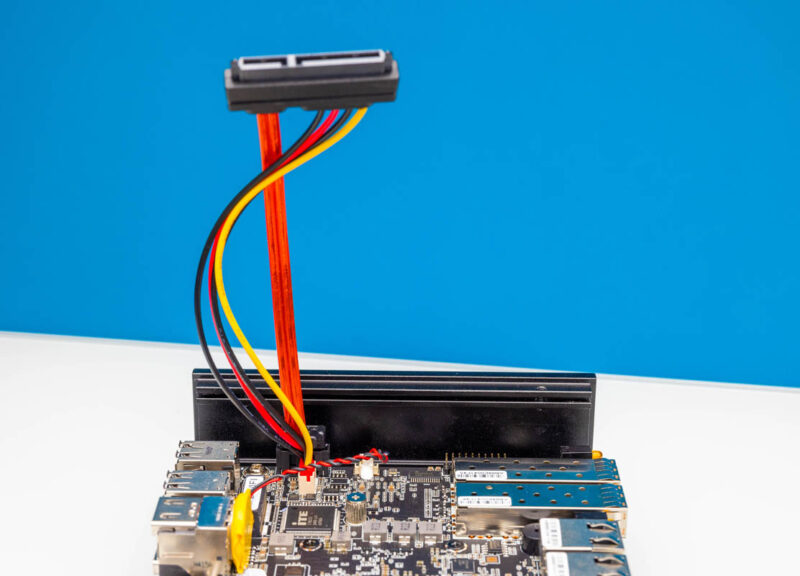
To get to the M.2 SSD as well as the CPU and NIC chips, we have to remove eight screws allowing us to remove the motherboard from the heatsink case. We also needed to remove the front and rear faceplates. That means to get to this point took removing 20 screws.
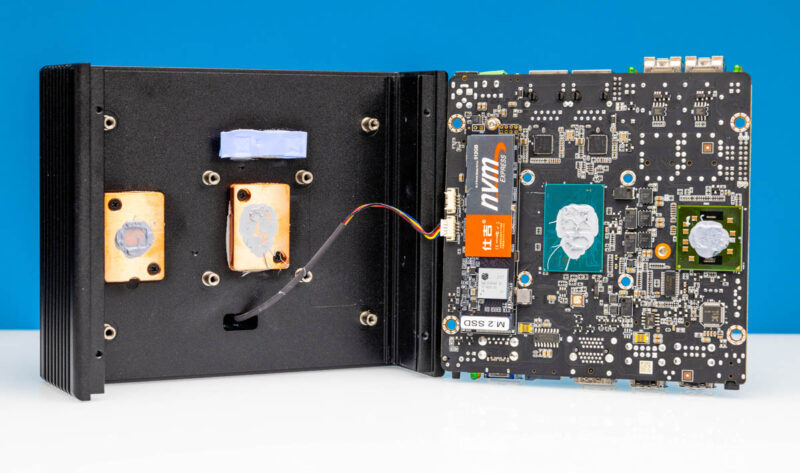
There are two blocks for the CPU and the 10G NIC, and a smaller block with a thermal pad for the Intel i226-V NICs.
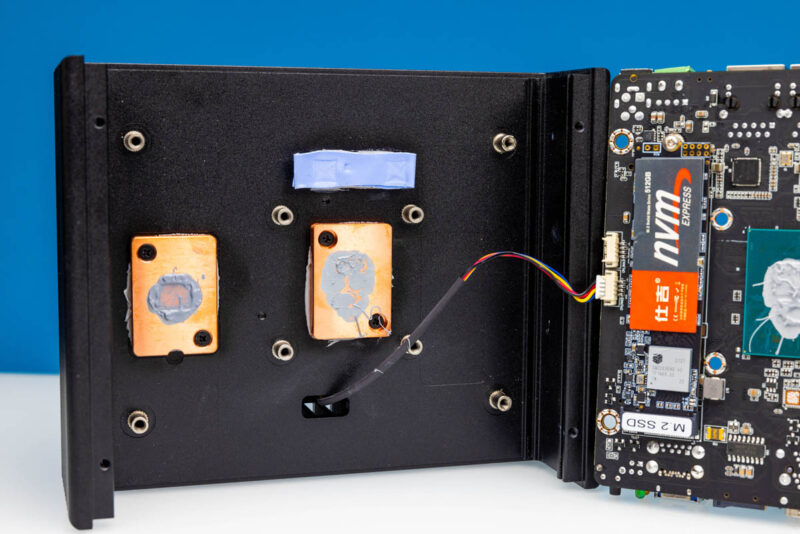
Here is the motherboard. We can see that the NVMe SSD that only runs at x1 speeds does not have a thermal interface to the chassis. If you are buying a SSD for this, just get the lowest power one you can.
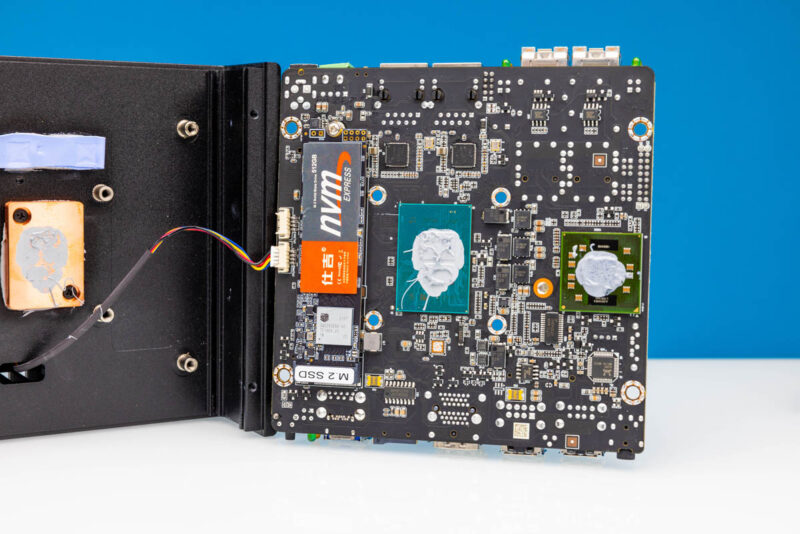
Here is a close-up of the board.
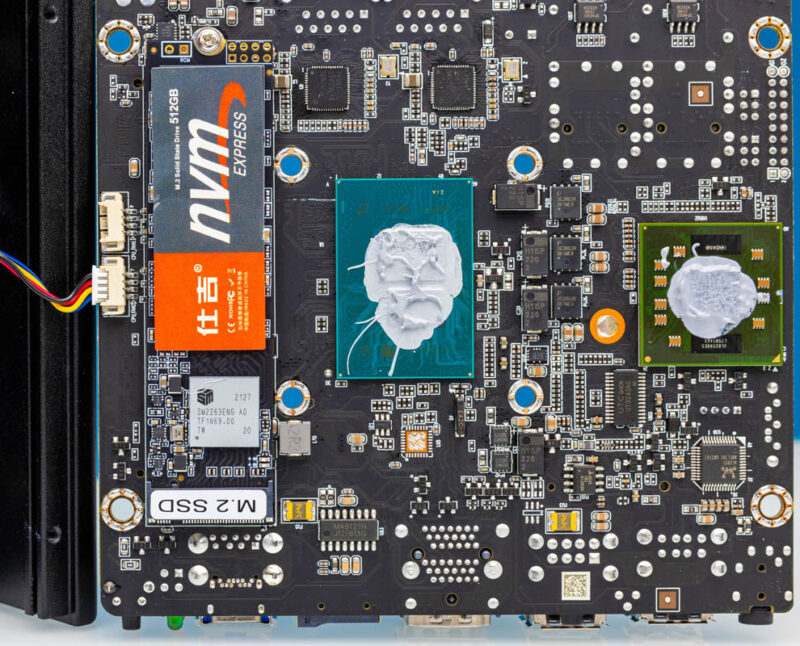
The chip in the center is the Intel N100 or Intel Core i3-N305. The two smaller chips on top are the Intel i226-V 2.5GbE NICs. The rightmost chip is the Intel 82599ES.
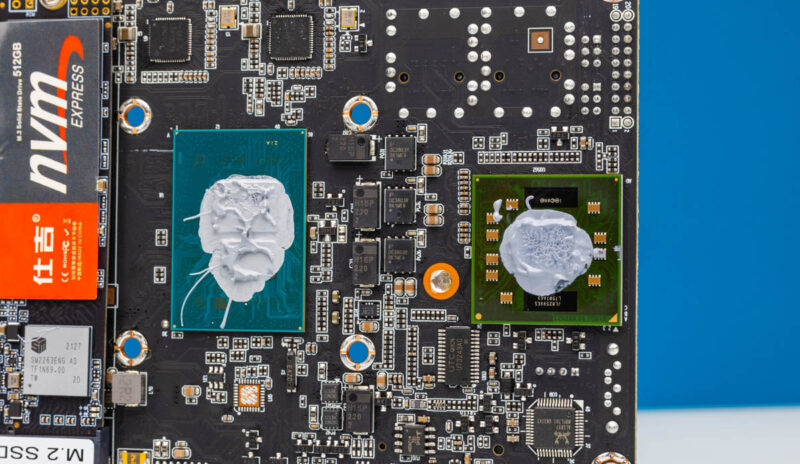
If the Intel 82599ES seems old, it is. First introduced in Q2 2009, the 65nm NIC is around 15 years old. In May 2025, it will go to End-of-Life/ End-of-Support. While there are a ton of Intel X520 NICs out there, this is probably not the NIC platform that Intel is investing heavily in at this point.
Next, let us get to the topology of the system.




I’m surprised there was no mention of the awful TIM application.
I would honestly guess that out of the system power, 5w+ is the old 85299ES controller. They were not known to be power efficient.
This is so close, yet so far. I haven’t seen a lot of new N305 systems come out since last year when STH first covered them. Been hoping Protectli or one of the other vendors would have some system refreshes. But so far, nothing.
A modern 10GbE/Multi-GbE dual-port would be fantastic, and exactly what I need.
Check my post in the network forum from my build containing the n-305 unit. I bet the fan is loud because the vendor plugged into wrong location. (Fan2)
Can you benchmark with in band ecc enabled?
PCIe gen 2 is 4 Gb/s throughput per lane. 16 Gbps is all you’re going to get in x4… Doesn’t matter how old the chip is you attach to it.
Interesting product, but the fact it uses a 15-year-old NIC means that it’s essentially manufactured e-waste. Combining a low power device with a NIC that’s known to consume a lot of power (relative to newer NICs) isn’t great.
I’ve been looking into these heavily since this review came out. I recently found similar versions on aliexpress but with higher model CPUs (like i3-1215u) that have more PCIe lanes (20 vs 9) which in theory should resolve the NIC bandwidth issues. Search for “BKHD 2024 Mini PC 4*RJ45 With 2*10G SFP”
Still the same old NIC chip with a couple watts higher usage and the CPUs themselves will peak at higher wattages (with higher perf). Idle should not be too much more than the N100/300 versions. Also many of them use dual channel DDR4 so similar bandwidth but reduced cost for a given capacity. I have not bought one yet but very tempted. I’d be set if I could find a mini-ITX version with a bunch of SATA ports (there are some N100/300 boards like this).
I’d been hoping for a clear winner for a late 2024 build of a router/firewall and unfortunately this does not yet seem to be it.
Hi at 19:05 of the YT you show a lot of the unit disassembled and there seems to be a small gap between the upper case and the m.2 drive. Do you or anyone else here have a recommendation for active or passive cooling of the drive? Is there enough reasonable space for a thermal pad or is there a heatsink angle?
Thanks in advance
As a second thought an external SSD might not be a bad idea for my usage. I’m planning on using this as an OPNsense firewall/router only.
YT timestamp of where I believe the gap is
https://youtu.be/Z-3ZjMSEEc8?si=s9zmYsb_b2fe8lUl&t=1084
imgur from the yt video
https://imgur.com/pSkaNMP
@Patrick
Do you still have the n305 model? If so, could you check the CSM BIOS settings and confirm if the network stack is set to Do Not Launch, Legacy, or UEFI.
I bought one with the intent of using it as a firewall, Ive not been able to get the 2.5GB NICs to connect to *anything*; switches or ONT. And now, on reboot… the OS cant see either 2,5GB NIC….